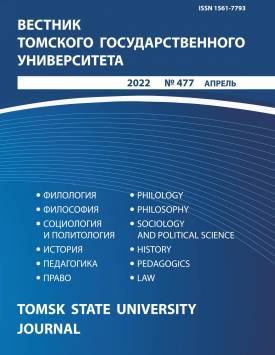Applied adaptation of students with health limitations
The transformation of education observed today in the Russian Federation does not facilitate the preparation of recommendations for the implementation of applied education based on the following reasons: the introduction of distance learning, the increase in specialties with the consolidation of universities, the formation of a two-tier system (bachelor's and master's degree) of higher education, and the formation of multidisciplinary universities. As a result, students with health limitations have certain issues associated with the possibility of maintaining an appropriate level of applied preparedness within the framework of a future profession. The aim of the study is to form an applied adaptation when working with students of various medical groups due to the adaptation of the body to physical activity by the degree of severity (volume and intensity) of applied physical education. To achieve this aim, the author has developed applied physical education - the concept of students' applied physical training: a set of specific and non-specific means and types of physical culture, as well as professionally applied means associated with their use in mastering the norms and functions of the future professional activity of an employee. The author's hypothesis states that, for this purpose, the means and methods of physical culture that are used in the professionally applied training of students is of great importance. In conjunction with the pedagogical process of applied physical education, this implies the organization of continuous professional and applied training. Thus, for the adaptation of the body to the future profession, students will be sufficiently provided with a ranged increase in functional capabilities. The South Ural State University students took part in the study in control (15 students) and experimental (15 students) groups. The participants were male and female students with different diseases: of the musculoskeletal system (3 males and 4 females); with myopia or of sight (3 males and 2 females); with hearing loss or of hearing (1 male and 1 female); disorders of the internal organs (7 males and 5 females); of the endocrine system (diabetes) (2 males and 2 females). The average age of the participants was 19. A distinctive feature of the experimental methodology was that the mechanism for implementing applied physical education is based on the introduction of professionally applied physical culture in every second, fourth and sixth semester to improve motor fitness, reduce the period of adaptation, and increase the range of adaptive capabilities during applied physical loads. The study clearly demonstrates that, when using the methodology of applied physical education developed by the author, the range of adaptive capabilities of the body increases sufficiently (p < 0.05) in the students of the experimental group at all three phases of its formation: urgent “initial”, long-term, and stable, due to structural changes in students' bodies.
Keywords
students, adaptation, applied physical education, professional activity, applied training, higher educationAuthors
| Name | Organization | |
| Viktorov Dmitriy V. | South Ural State University; South Ural State Institute of Arts named after P.I. Tchaikovsky | viktorovdv@yandex.ru |
References

Applied adaptation of students with health limitations | Vestnik Tomskogo gosudarstvennogo universiteta – Tomsk State University Journal. 2022. № 477. DOI: 10.17223/15617793/477/19
